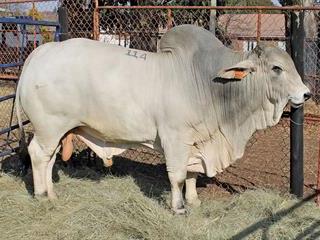A well-planned assault by weevils, mirid bugs and mining mites has rescued a dam from both water lettuce and hyacinth infestation, eliminating dependence on herbicides. Lloyd Phillips reports.
Otstanding results are being achieved by the Aquatic Weed Biocontrol Programme at the Wewe Siphon Dam in Tongaat, after insects that feed exclusively on water lettuce (Pistia stratiotes) and water hyacinth (Eichornia crassipes) were introduced by entomologists from the South African Sugarcane Research Institute (SASRI) at Mount Edgecombe, KZN.
Before 2007 the Wewe Dam, behind the Maidstone Sugar Mill and housing estate, was completely covered with water lettuce, a perennial plant which forms a dense mat. The weed was introduced from South America as an ornamental pond plant but soon invaded rivers, dams and pans, mainly in the country’s subtropical areas. It’s classed as a Category 1 weed and must be eradicated. In mid-2007 Dave Armstrong of Tongaat Hulett Sugar (THS) Agricultural Operations approached Otto de Haas, SASRI’s Durban/North Coast extension officer to find an alternative to the herbicide programme used against water lettuce in Wewe Dam. This programme wasn’t yielding lasting results and was becoming increasingly expensive.
Bringing in the weevils
They contacted Prof Martin Hill, head of entomology of Rhodes University, whose department works extensively on biological control of aquatic weeds. Prof Hill recommended using a South American weevil (Neohydronomus affinis) that had already been successfully released around South Africa – its adults and larvae burrow and feed exclusively on the leaves of water lettuce and the plant becomes waterlogged, dies and eventually sinks. The weevils then move onto less-infested plants and newly germinating seedlings.
SASRI obtained a small colony of these weevils from a Department of Water Affairs and Forestry (DWAF) Working for Water (WfW) rearing facility in Uitenhage. THS funded the establishment of an aquatic weeds section at SASRI’s biocontrol-insect rearing facilities, including four porta pools where a weevil colony was started. Between September and October 2007, some 8 700 beetles were released onto the Wewe Dam. By November 2007, the dam was clear of water lettuce.
SASRI entomologists realised, however, that clearing the water lettuce made space for an infestation of water hyacinth, which was present in low numbers but had been outcompeted by the water lettuce. Water hyacinth was also originally introduced from tropical South America as an ornamental pond plant, and is South Africa’s foremost aquatic weed.
Hyacinth grabs its opportunity
As expected, by December the dam was completely covered by a mat of water hyacinth. SASRI contacted Ryan Brudvig, the Regional WfW biological control implementation officer, who told them about biocontrol agents established on water hyacinth on the Enseleni River, adjacent to the Enseleni Nature Reserve near Empangeni, Zululand. He suggested they collect insect samples. Thereafter, two species of weevil (Neochetina eichhorniae and N. bruchi), a sap-sucking mirid bug (Eccritotarsus catarinensis) and a leaf mining mite (Orthogalumna terebrantis) were successfully established in SASRI’s porta pool, while some of the insects originally collected were released on the Wewe Dam on 12 December.
Quick, lasting results
Since then, plants infested with biocontrol agents have been released weekly on the dam, and as early as March 2008, water hyacinth began to die back. Areas of open water gradually became more visible as the plants decomposed, but attaching stems between them kept dead ones afloat. Lack of rain, wind and wave action on the dam have also delayed the process.
From mid-September 2008 a WfW crew has been mechanically removing some of the dead hyacinth and other undesirable plants. With an effective biocontrol plan in place, herbicide application will now only be necessary in extreme circumstances.
Contact Dr Des Conlong of SASRI on (031) 508 7400 or e-mail [email protected]. |fw









